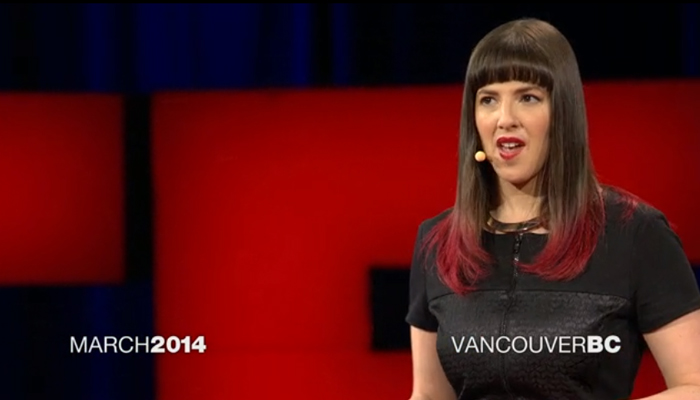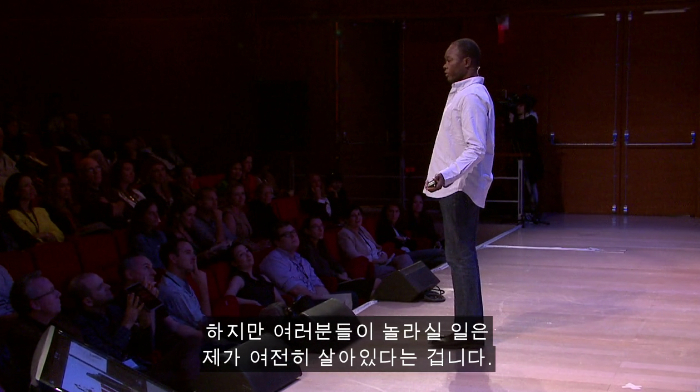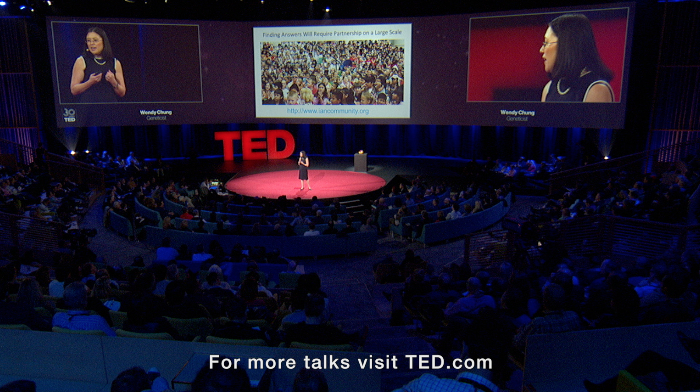
When you watch a TED Talk, you see a speaker on a stage sharing a big idea. But for us in TED’s post-production department, we see each talk as the final product of a complex recipe. The speaker and their words are the most important ingredient, of course. But there are other, less-obvious ingredients in the video too — like the TED intro, the thank-you to our sponsor, the closing outro video message, as well as the lines of text overlaying the video itself, called “lower thirds,” that contain the speaker’s name, the date and the location where the talk was given.
Recently, though, we realized that we baked in a few too many ingredients. We need a simpler video file with fewer extras tacked on. Which meant we need to remake our library of 1,700+ talk videos without those extras — starting from scratch with the edited video and re-exporting it with a simpler list of ingredients.
When we started posting TED Talks in 2006, we had one sponsor, spoke in one language, and existed in only a few places: the TED.com website, the iTunes store, and Google Video. Now we have many sponsors, speak 105 languages, and share talks on YouTube, Netflix, and more than 50 video-sharing platforms around the world. Stripping down our talk files will help future-proof our entire library so we can keep serving many languages, sites and video distribution platforms.

One of the many details you might not have noticed are baked into each TED Talk—the date and location where the talk was given.
Distribution is a big deal for us — collectively, our distribution partners have delivered one billion video views as of March 2014. Some of these new partners require Korean subtitles, or ask us to translate on-screen text into a handful of different languages. Others ask that we remove the “For more talks, visit TED.com” text towards the end of our talks, because their policy doesn’t allow them to show other URLs. Many of our partners need other special ingredients for their particular audience.
In rarer cases, we need to make changes to our talk files themselves. A speaker’s name might have changed. Or we might realize that we mislabeled a talk’s date or event, and we want to correct it. And what if we want to change our water-drop intro video to something else, later on down the line?
Currently, we’re stuck with what we’ve got. And it’s meant that we’ve had to create little hacks to give some of our distribution partners their special requests. It’s fine to do this for a few people or a few partners, but as we grow, that quick hack will become time-consuming.

Some of our global partners have specific needs for talks—like subtitles in the language their audience speaks.
So instead we’re going back to the original video project file for each and every of our 1,700+ talks and, essentially, un-baking them. We’re taking out the extras — the speaker’s name, location of the event, and any other on-screen text, as well as the standard TED intro and outro — so we are left with just the main ingredient, the talk itself. At the same time, we’re creating a custom system that will allow us to add all the extra elements separately — in a way that lays them on top of the bare-bones video, dynamically. It will all be easily editable.
This new video is called the “clean” talk; thus, this project has been dubbed Clean Re-Exports, or, around the office, Project Cleans. It is easily the largest project that I’ve ever managed in my career. In order to create cleans, we have to track down over 10,000 individual media files. Have you ever stressed over losing a single file on your computer? Imagine having to track down thousands, going back 5 to 7 years. There are inevitable holes in our electronic archive, so that means physically going down to our storage unit, pulling tapes and re-digitizing hours of media. Once we track down the media, I assign the un-baking work to 10 different freelance editors.
We started in January, and by now we’ve completed about 30% of the archive. More than 800 talks of our videos are somewhere in the process pipeline of getting “cleaned.” Meanwhile, we’re giving the same treatment to each new talk we post from Monday through Friday so we don’t have to go back to it later.

Another little element you might not notice are a part of each and every talk.
At some point along the pipeline, more than one third of TED’s entire staff will have a hand in this clean re-export project. This includes our 22-member production team, who are all deeply involved in the project; our distribution team, who understand the needs of each of our individual partners; our partnerships team, who work with sponsor on new ads; our editorial team, who check the copy for mistakes; and our interns, who double-check it all.
It’s tedious at times, and it can be easy to lose sight of the goal. But the other day we tested the back-end system built in-house by our engineering team to stitch all the pieces together — clean video + titles + intro/outro video + subtitles — and were so excited to see it produce the finished video quickly and cleanly. You couldn’t tell the difference against what’s currently on the site.
It’s an uphill battle, yes, but this work is vital for our mission of sharing ideas, allowing us to reach more and more people than ever before.
*Gwen is our Post Production Manager. When she’s not at work, she can be found running marathons with a camera strapped on her head.
Comments (9)